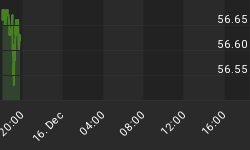Preposterous economic proposals from economists living in academic wonderland are the norm.
For example: Please consider the following statements by Brad DeLong, a professor of economics at the University of California at Berkeley, from his post Central Banking: Banking Camp vs. Macroeconomics Camp.
A prolonged and sustained central-bank policy of purchasing ever-increasing quantities of long-term assets is essential to get a financial sector with diminished appetite for risk to use some of its risk-bearing capacity for its proper purpose of reducing the risk burden on entrepreneurship and enterprise. But such a policy removes diminishes financiers' ability to rely on the easy business of riding the duration yield curve for profits. A simple and straightforward central-bank statement that in the aftermath of 2008-2013 it is clear that inflation targets in the 0-2%/year range run unwarranted downside employment risks, and that inflation targets should instead be in the 2-4%/year range is an obvious no-brainer from the standpoint of an organization that exists to balance aggregate demand to potential aggregate supply.
In Academic Wonderland
Those in academic-wonderland think inflation is cure for everything. Somehow they know (or believe central banks should know)...
- The right amount of inflation
- The right amount of risk taking
- The right amount of unemployment
- The right policies that will achieve 1, 2, and 3 above.
In the Real World
- In the real world, the Fed can set inflation targets but the market does not have to agree
- In the real world, The Fed can target money supply but it cannot force consumers to borrow or banks to lend
- In the real world, asset bubbles frequently form before price inflation hits
- In the real world, the Fed missed a huge asset bubble in dotcom stocks in 1998-2000
- In the real world, the Greenspan Fed created the biggest housing and credit bubbles in history
- In the real world, Bernanke did not even realize there was a housing bubble until it burst
No Brainer or No Brains?
DeLong state "... it is clear that inflation targets in the 0-2%/year range run unwarranted downside employment risks, and that inflation targets should instead by in the 2-4%/year range is an obvious no-brainer..."
- If inflation was a cure-all, India would not be in the midst of a currency crisis
- If achieving 4% price inflation without causing other economic distortions was so easy, Japan would have had inflation it decades ago
I could provide a thousand more examples but won't.
Delong-in-Fantasyland
DeLong humorously bills his blog as "Grasping Reality with Every Possible Tentacle: Brad DeLong's Semi-Daily Journal--Fair, Balanced, and Reality-Based 99.4% of the Time."
Let's return to the real world.
When Nixon closed the gold window, the expansion of credit exploded. The Fed blew asset bubble after asset bubble. Fed policies not only got the US economy in serious trouble twice, those policies continue to play a huge part in the wage discrepancies that inflationists like DeLong moan about.
In the real world, Japan got in trouble to the tune of 250% of GDP with ridiculous Keynesian and monetarist "solutions" that did not work.
In the real world, Japan is in deep trouble financing interest on its nation debt, even at rates close to 0%.
Delong-in-Wonderland says the cure for such problems is more of the same polices that got us in trouble in the first place.
DeLong may as well stand in front of the ocean and command the tides to stop. Such is the thinking (or lack thereof) of those in ivory towers who think mind-over-matter and Alice-in-Wonderland policies work.















